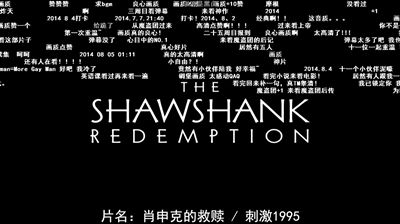
We were quite overwhelmed by the response to last week’s article about how China is inventing the future of cinema with the concept of ‘barrage’. (Thank you for all the tweets, Facebook posts, emails, LinkedIn mentions and other shares.) So we have decided to do what Hollywood always does when it has an unexpected hit on its hands, which is to quickly rush out a sequel.
The cinema barrage concept also stirred a lot of interest in China (we’ve found no less than 353 articles). In the last piece we focused on the trial involving The Legend of Qin (a.k.a. Qin’s Moon). This time we look at the other film to have tried this concept in a slightly different format at the same time, Generation 90 blockbuster Tiny Times 3.0.
Putting it all on the screen
Unlike the Legend of Qin special ‘barrage’ screening you can see from the picture above that for Tiny Times 3.0 the barrage was overlaid on the main screen showing the films, rather than projected onto the walls on either side of the screen. This makes the tucaos harder to ignore, so it is obviously only something for those cinema goers who seek out this activity, rather than casual cinema goers.
Call it striking up a conversation with the auditorium or turning the cinema screen into a graffiti wall for people to sign temporary messages.
JRJ.com interviews Wang Jun, who was responsible for the Tiny Times 3.0 barrage trial.
Mr Wang was keen to point out that this was an early experiment and is not something that should be expected to be rolled out to every screen any time soon. But the first question was about the equipment and cost.
Wang says that “the barrage is not complicated. There are numerous equipment package available now that add up to about 100,000 yuan [USD $16,240].” He then goes on to elaborate:
First, the film technology currently requires a digital movie player is a secret key [KDM?]. Simultaneous subtitles during playback and video cannot be implemented under the current terms from the policy. This broadcast mainly relies on our software. Only a screening device hardware is not speculation that the two were a movie projector screen with a barrage content superimposed on each other.
The current software was designed for 200 simultaneous participants, which Wang admits is a problem when you have sold 250 tickets. Questioned about whether the wifi network can handle that many simultaneous streams, Wang points out that because these are only short messages there is actually relatively little data being handled.
“Our model is the before the audience go in to watch the movie they access our site, setting up their user names and colors for the barrage, which are all part of the software,” Wang says. It can be deduced that the software also has a filter that removes any obscene words, though the fact that users have to register (presumably with their phone number), should keep abuse down to a minimum.
Wang is also keen to stress that ‘barrage’ is not a regular cinema experience and not something that should be done for all films, but for a very specific viewing occasion. Technology is not the problem in implementing it, but rather audiences’ attitudes.
Wang: technology is certainly not the problem, the problem is mainly the needs of users. In fact, we think, watching movies and playing barrage is catering to two separate kinds of demand. We emphasize that an interactive, that is, between the same field interaction, and that the form of film distributors might not accept this. This “thin” type of barrage may not be always be acceptable.
90 ‘convulsed with laughter’; 80 ‘in wrong auditorium’
However, it is clear that a film like Tiny Times 3.0, which aimed squarely at China’s Post-90s generation, is perfect for barrage. (As an article in Zhejiang Online puts it, the ’90’ are “convulsed with laughter”, while the ’80’ think that they’ve gone “into the wrong auditorium”.) The interviewer (Qin Jiahao) admits to being part of the Post-90s, for whom the second screen experience is second nature when watching television or consuming media, but recognises that it may not be for everybody.
The question then arises as to whether the barrage could be integrated into 3D-type glasses where it can be switched on or off as desired. Wang says that this idea has already been considered.
Wang: In fact, we have to follow up on this idea too, twitter [Weibo?] has been done in this area, you can go check. Implementations may be projected as subtitles through glasses, but it would need to produce special glasses, and it could be an alternative 3D model. But I think we should distinguish barrage and movies; engaging in barrage and watching movies are two different kinds of experiences. But we will consider this idea, which is technically achievable. Twitter [Weibo?] has also been done.
Not everyone in China is enamoured by the concept of cinema barrage. A piece on Baidu.com makes its feelings clear in the headline: ‘Social barrage of movies will be short-lived‘
The article points out that “Tucao and barrage movie originated in Japan” though this seems to have been for online, rather than in cinemas. The article explains the trial this way:
In the “Tiny Times 3” barrage viewing the movie, the scene is nearly 300 spectators at once the screen. Play bad, joy in the process not only lets the audience address the screen in enjoyable, even fun, way. To achieve the effect of the cinema was prepared to invest more than 50,000 yuan [USD $8,120] and consider it money well spent.
But afterwards, the person interviewed said the atmosphere goes from joy back to reality. He said the barrage is not suitable for all movies, more suitable for this form of comedy or like a “Tiny Times 3” this concern, the topic of high “Net Generation” is a hot ticket.
Having said that, even though the network is indeed born generation heat sink slot points very much. If you do change, will you deliberately go to the theater to watch a tucao movie?
The article acknowledges that it is still early days, “with the introduction of a new technology, it is inevitable that there is always a boom sought after. Barrage is in the formative years of the introduction of the movie is still in the newly developing domestic exploration period.” But the article does not envision barrage ever having more than a small ‘supporting role’ in cinemas.
Martial arts of tucao
Ifeng reports that in addition to barrage being rolled out to 100 screens for Legend of Qin, there is now a third film for which barraging has been tried: martial arts film Xin Chun Knife (a.k.a. Brotherhood of Blades). For this the capacity was increased from 200 participants to 400 and the delay/lag in posting the tucaos was just one second, making it a more immediate experience. Yet the article does not consider this screening trial a success.
However, “Xiu Chun Knife” episode neat, little loophole, clues are more complex, there are dazzling action scenes clips, many viewers and critics agree that the film is not suitable for the barrage. The results from the field of view, the film is also a “trough point” limited barrage is not intensive, but also up to four to five lines. Instead, the barrage has also affected some of the audiences’ ability to understand the plot, the audience made barrage that “because of the barrage that he saw three forty minutes, and do not know what the story telling.”
While it is easy to do barrage for any film, since it requires no film-specific but only site-specific preparations to the auditorium. There was also instances in which the filter software malfunctioned, so instead of just replacing banned words with asterixis, the name of the lead actor Zhu Dan also ended being shown as * * causing confusion and unintended mirth.
Another problem is that “Xiu Chun Knife” barrage field no third-party ticket in the theater ticket office and exit signs indicated what screening it was. So some of the audience thought it was a ticket into the general sessions, and found that barrage, seriously affecting the watching, perhaps because they do not like the barrage form, there were a few visitors who chose to leave halfway through the film.
Culture Channel asks whether barrage will go mainstream
Will barrage movies become a regular viewing model? Chinese Film Critics Society’s Xudong thinks barrage viewing will not become mainstream. He believes that the barrage is often greater demand for tucao the second time watching movies, viewing behavior that is not repeated in the mainstream cinema audience’s viewing habits. Chen Su, vice president of music, thinks that the studios are supportive of the barrage viewing normalization,”Barrage like 3d, Imax, 4k, is a new way to experience films.”
Is any film sacred?
But Beijing Youth Daily slams the cinema barrage concept in no uncertain terms.
Viewing from the barrage of effect, negative energy is obvious: it seriously interferes with the screen, causing the audience “absent-minded”; wanton disregard of the information, and will also reduce the openness and ambiguity of Motion Picture Arts processing; more critical yes, in a dark theater viewing public space, the original “voyeurism” a sense of psychological and ritual gone, fully interactive mode so that the original opening of the private cinema into a new tea, wine shop and bath house.
And to drive home the point about ‘amusing ourselves to death’ – along with disapproval of the concept’s Japanese origins (where “female otaku house are often addicted to the online world of social media”) – the article even mocked up the following movie in barrage treatment mode to let the full horror sink in.




